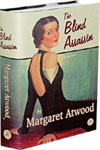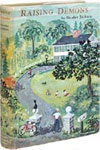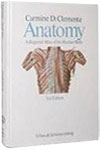Otto Frank Looks to His Daughter Anne Frank's Writing to Find Inspiration in Helping Those Less Fortunate ("Anne's strong feeling for the poor and underprivileged people is showing")
Otto Frank
From
The Raab Collection, Ardmore, PA, U.S.A.
Seller rating 5 out of 5 stars
![]()
AbeBooks Seller since 1 August 2006
About this Item
Description:
The story of Anne Frank and her family and friends in the Annex is too well-known to justify repeating here. What is less well-known, however, is the important work her father did after the Holocaust to preserve Anne?s memory, and views of life, into the future.After Auschwitz was liberated, Anne?s father, Otto Frank, returned to Amsterdam. On his way back, he heard of his wife Edith?s death. Back in Amsterdam, he did everything he could to find out what had happened to his two daughters Anne and Margot. He placed an advertisement in the newspaper and talked to survivors who were returning from the camps. He wrote to his sister, ?I just can?t think how I would go on without children having lost Edith already?It?s too upsetting for me to write about them. Naturally I still hope, and wait, wait, wait."On July 18, 1945, he met two sisters who had been in Bergen-Belsen with Anne and Margot, and they told him that his daughters were dead. The next day Otto sent a postcard with this melancholy news to his family. Later he sent a letter to his brother Robert, asking him to forward it to their mother in Switzerland. As Otto wrote, ?Again and again small groups of survivors returned from different concentration camps and I tried to hear something from them about Margot and Anne. I found two sisters who had been with Margot and Anne in Bergen-Belsen. They told me about the final sufferings and the death of my children.? After Otto told Miep Gies, who had hidden them in the Annex, about his daughters, she gave him Anne?s Diary papers. For all this time, she had been keeping them in the drawer of her desk, with the hope of returning them to Anne. She said to Otto as she handed him the Dairy: ?Here is your daughter Anne?s legacy to you.? Miep herself stated, ?I didn?t hand [Otto] Anne?s writings immediately on his arrival, as I still hoped, even though there was only a slight chance, that Anne would come back?When we heard in July 1945, that Anne, like Margot, had died in Bergen-Belsen, I gave what pieces of Anne?s writing I had back to Mr. Frank. I gave him everything I had stored in the desk drawer in my office.? In August 1945, Otto wrote friends, ?I know you were informed by Robert of all that happened and I am convinced you share the great loss I had to undergo. No use enlarging upon it, we all have to bear our fate. I try hard to stay firm??Otto first mentioned the Diary to his mother in a letter dated August 22, 1945: ?As luck would have it, Miep was able to rescue a photo album and Anne?s Diary. I didn?t have the strength to read it.? Though a month later, Otto had begun reading it, writing to his mother: ?I cannot put down Anne?s Diary. It is so unbelievably engrossing?? At the end of the 1960s, Otto recalled how he felt when he started to read the Diary that first time: ?I began to read slowly, only a few pages each day, more would have been impossible, as I was overwhelmed by painful memories. For me, it was a revelation. There was revealed a completely different Anne to the child that I had lost. I had no idea of the depths of her thoughts and feelings.? In her Diary, Otto read about the plan Anne had to publish a book after the war about the time she spent in the Annex.The edited and compiled manuscript of Anne?s Diary, typed by Otto Frank?s hand, found its way via a number of different contacts to the Dutch historians Jan Romein and his wife Annie. Annie attempted to find a publisher, but her attempts were unsuccessful. This led Jan to write a short article about the Diary, and the article appeared on April 3, 1946 on the front page of the Dutch newspaper ?Het Parool? Publishers then expressed interest. "The Diary of Anne Frank" was first published on June 25, 1947. Otto later said of this moment, ?If she had been here, Anne would have been so proud.? In a 1947 letter to his cousin Dora in America, he explained that Anne?s Diary had been published and had surprised everyone with being hugely successful, with four public readi. Seller Inventory # 22132
Bibliographic Details
Title: Otto Frank Looks to His Daughter Anne ...
Signed: Signed by Author(s)
AbeBooks offers millions of new, used, rare and out-of-print books, as well as cheap textbooks from thousands of booksellers around the world. Shopping on AbeBooks is easy, safe and 100% secure - search for your book, purchase a copy via our secure checkout and the bookseller ships it straight to you.
Search thousands of booksellers selling millions of new & used books
New & Used Books
New and used copies of new releases, best sellers and award winners. Save money with our huge selection.
Rare & Out of Print Books
From scarce first editions to sought-after signatures, find an array of rare, valuable and highly collectible books.



